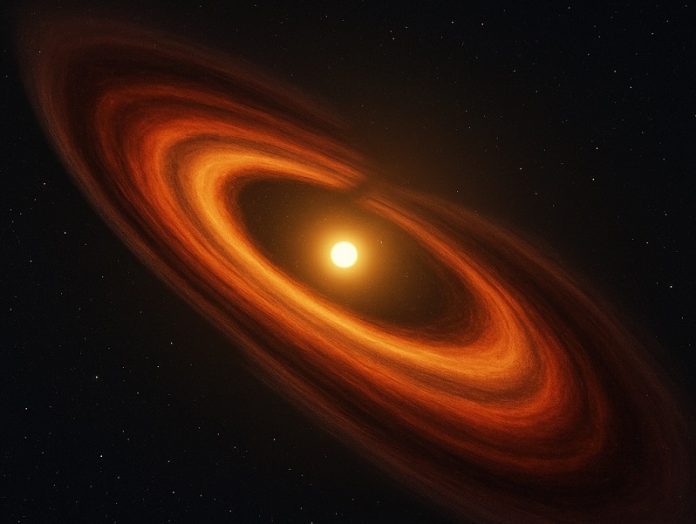
For decades, scientists have imagined planet formation as a calm and orderly process.
The picture was simple: young stars surrounded by flat, pancake-like disks of dust and gas, where small particles slowly clumped together to form planets.
But new research is showing that the truth may be much messier—and much more fascinating.
An international team of astronomers has discovered that many of these protoplanetary disks—the swirling birthplaces of planets—are not perfectly flat at all.
Instead, they are subtly warped, with small bends and tilts that ripple through the structure.
This new view, published in Astrophysical Journal Letters, challenges long-held ideas about how planets grow and how they settle into their orbits.
The findings come from the Atacama Large Millimeter/submillimeter Array (ALMA), one of the world’s most powerful observatories located high in Chile’s Atacama Desert.
As part of the ambitious exoALMA program, researchers carefully studied the faint radio signals emitted by carbon monoxide gas inside dozens of protoplanetary disks.
By examining Doppler shifts—tiny changes in the wavelengths caused by the motion of the gas—they were able to track the flow of material across the disks with remarkable precision.
What they found surprised them: the gas in different parts of the disks was moving in ways that could only be explained if the disks themselves were tilted slightly out of alignment.
These warps, sometimes only half a degree to two degrees, may sound small, but they are enough to reshape our understanding of planet formation.
Dr. Andrew Winter, the study’s lead author from Queen Mary University of London, explained that these subtle misalignments are strikingly similar to the small tilts seen among the planets in our own solar system.
“Our results suggest that protoplanetary disks are slightly warped,” he said. “This would be quite a change in how we understand these objects and has many consequences for how planets form.”
Dr. Myriam Benisty of the Max Planck Institute for Astronomy agreed, adding that exoALMA has revealed structures in planet-forming disks that no one expected.
The discovery suggests that planets might not form in the serene, balanced environments once assumed, but rather in slightly chaotic settings where small twists and warps play an important role.
These warps may also help explain other puzzling features that astronomers have observed in young stellar systems.
Spiral arms in disks, uneven temperatures, and odd gas motions might all arise naturally from these subtle tilts.
In addition, the research suggests that the degree of warping could be linked to how much material a young star is pulling in, hinting at a deep connection between the star’s inner feeding zone and the outer regions where planets are born.
As for what causes these warps, scientists are still searching for answers. The gravitational influence of hidden companion stars or the turbulent flow of gas and dust could be at play.
Whatever the cause, this discovery changes the blueprint of how we think planetary systems are assembled. Instead of being born in perfect order, planets may emerge from slightly skewed disks, setting them on paths that echo the tilted orbits we see in our own solar system.
By revealing this hidden complexity, the study offers a more dynamic, and perhaps more realistic, picture of how worlds are formed. The universe, it seems, builds planets not in perfect symmetry but with a few twists along the way.



